The Deposit and Return Scheme for Scotland Regulations 2020: accompanying statement and proposed regulations
This is a copy of the proposed regulations and an accompanying statement that have been laid before the Scottish Parliament for a 91-day period for comment.
Accompanying Statement and Proposed Regulations
1. This statement accompanies the draft of The Deposit and Return Scheme for Scotland Regulations 2020 laid before the Scottish Parliament on 10 September 2019 for a 91-day representation period until 10 December 2019.
2. The above Instrument is proposed to be made in exercise of the powers conferred by sections 84, 89, 90 and 96(2) of the Climate Change (Scotland) Act 2009 (“the Act”). This statement fulfils the requirement of Section 97(2)(b) of the Act to set out the reasons for making this Instrument.
Policy Objectives
3. The main policy drivers for this Instrument are to promote and secure an increase in recycling of materials, forming part of the Scottish Government’s response to the global climate emergency.
4. The Scottish Government is committed to creating a more circular economy where products and materials are kept in a high-value state of use for as long as possible – maximising resources to benefit the economy and the environment. We recognise that fresh interventions are needed to bring about the systemic and behavioural change necessary to fulfil these aspirations.
5. It was against this backdrop that in the 2017 Programme for Government, the Scottish Government announced its intention to introduce a Deposit Return Scheme (DRS) for drinks containers for Scotland. Many other countries operate similar schemes, including:
- Croatia
- Denmark
- Estonia
- Finland
- Germany
- Iceland
- Lithuania
- Netherlands
- Norway
- Sweden
6. An extensive programme of consultation and stakeholder engagement followed the Scottish Government’s announcement and on 8 May 2019 the Scottish Ministers published “A Deposit Return Scheme for Scotland Full Business Case Stage 1”.[1] That document (“the FBC”) identifies the Scottish Government’s preferred scheme design for DRS, building on the Outline Business Case[2] (“the OBC”) published in May 2018 and the further evidence-gathering and analysis that has subsequently taken place. The regulations are based on the scheme design set out in the FBC.
7. The design enables consumers to take single-use containers back and redeem a 20p deposit from any retailer selling drinks covered by the scheme. This is within the range of deposit levels adopted by successful international schemes, adjusted for inflation. The scheme will include plastic bottles made from polyethylene terephthalate (“PET plastic”, which is the most common type of bottle for products such as fizzy drinks and bottled water), aluminium and steel cans and glass bottles.
8. Businesses that sell drinks to be opened and consumed on-site, such as pubs and restaurants, will have the choice as to whether to charge the deposit to the public and will only be required to return the containers they sell on their own premises.
9. Online retailers will be included in the scheme. This means that those customers who are dependent on online delivery, because for a variety of reasons they are unable to travel to shops, are able to easily get back the deposits paid on containers.
10. Non-retail spaces will be able to act as return locations. These could include recycling centres, schools or other community hubs. While retailers will be required by legislation to provide a return service, non-retail spaces will operate on an opt-in basis.
11. Bigger retailers with more space may install machines to both collect the bottles and cans and enable people to redeem deposits. Smaller retailers with less space have the option to return deposits over the counter, collecting the containers manually.
12. The FBC demonstrates how a successful DRS will contribute to Scotland’s 2025 target to increase the national recycling rate to 70%. Scotland’s household recycling rate has increased substantially in the last decade. The latest figures, published in September 2018 by the Scottish Environment Protection Agency (SEPA), confirm that in 2017 the household recycling rate reached 45.6%. That same year, for the first time, there was more Scottish waste recycled (1.12 million tonnes) than was landfilled (1.11 million tonnes).
13. This has been driven by substantial investment by central and local government in kerbside collections. The result has been significant increases in the number of households that have access to kerbside recycling facilities.
14. Despite these efforts, the rate of growth in household recycling rates has been slowing. Since 2014, following the introduction of a new methodology for calculating household recycling rates, the rates have only increased by 2.8%. The 2017 rate was only a 0.6% increase on the 2016 figures. It is, therefore, clear that further intervention is required to stimulate growth in household recycling rates.
15. There are limitations in the available Scottish-specific data in relation to sales, waste by material type and material reprocessing of drinks containers. The below table sets out the Household Waste Compositional Analysis estimates of recycling rates by material through local authority collections:
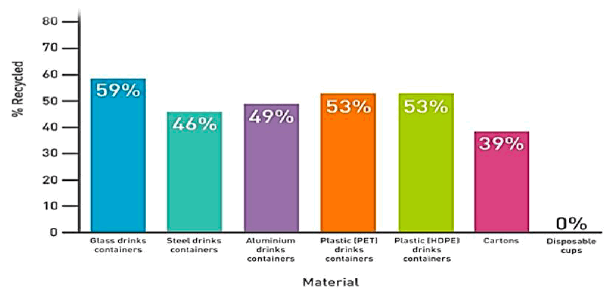
* Source: DRS Full Business Case Stage 1, p18. Disposable cups did not exist as a separate category in the compositional analysis.
16. Plastic, glass and metal containers are widely targeted for recycling, either via kerbside collections or recycling points and centres. Despite this there is clearly scope for improving recycling rates and we believe this can be best achieved through DRS.
17. The quality of material captured for recycling remains a challenge, with financial and operational constraints limiting the level of segregation that can be achieved at the kerbside. The Scottish Government believes the scheme will improve segregation of materials, thereby decreasing the opportunities for contamination and increasing the total amount of material collected in Scotland that is suitable for higher-value recycling.
18. The FBC also demonstrates how an effective DRS would support the delivery of “Towards a Litter-Free Scotland”,[3] the national litter strategy which aims to effect a wholesale shift in national policy and practice towards prevention.
19. The Scottish Government is committed to delivering these outcomes through DRS and to do so in a way which maximises the wider social and economic benefits which can be achieved through such schemes.
Policy Summary
20. The Instrument will:
- Prohibit the marketing or sale in Scotland of single-use drinks containers made of polyethylene terephthalate (PET plastic), steel, aluminium or glass, if the producer of those articles is not registered with the Scottish Environment Protection Agency (SEPA). The producer is either the brand owner (for products branded in the United Kingdom) or the importer (for products branded outside the United Kingdom).
- Require that a 20p deposit is applied each time one of those single-use drinks containers is sold in Scotland. The seller must also make clear that the packaging can be returned in exchange for reimbursement of the deposit. These obligations do not apply to products sold in export (duty-free) shops, on hospitality premises where a closed loop exists, or for sale to a consumer outside Scotland.
- Require producers to collect a target percentage of the scheme packaging which they place on the market in a calendar year, by collecting their own scheme packaging from retailers and return points, and accepting the return of their scheme packaging from wholesalers. Producers will reimburse deposits for any packaging returned or collected.
- Provide for targets which will increase over the first three years of the scheme’s operation (70% in year 1, 80% in year 2 and 90% in year 3). This approach builds on the experience in other countries which have successfully introduced similar schemes.
- Provide for producers to appoint a scheme administrator to meet the above obligations on their behalf. Anyone seeking to act as a scheme administrator must be approved by the Scottish Ministers.
- Require retailers to operate a return point at premises from which sales of scheme products are made. This involves accepting (subject to certain exceptions) packaging returned by consumers, reimbursing deposits for that packaging and retaining the packaging for collection by or on behalf of producers.
- Provide that, where specified criteria are met, the Scottish Ministers may exempt a retailer from acting as a return point and may approve any other person who wishes to act as a return point.
- Require retailers selling products by means of distance sales (e.g. through an online grocery sale and delivery service) to provide takeback services from the site of delivery to consumers who have purchased those items.
21. The 20p deposit will provide a strong incentive for shoppers to return single-use drinks containers for recycling, thereby increasing the number of these containers which are recycled (and reducing the number which could potentially end up as litter). This has been demonstrated through schemes elsewhere, some of which are well established and have helped countries like Sweden, Norway and Germany achieve high recycling rates and clean environments.
22. The Instrument applies consistently to all producers, retailers and material types within scope. The Instrument currently indicates a commencement date of 1 April 2021 for key provisions concerning the scheme’s operation. It is at this point that DRS would be considered fully operational. The timetable for implementation of the scheme is the subject of ongoing discussion with stakeholders, supported through the Scottish Government’s DRS Implementation Advisory Group. The various commencement dates included in the draft regulations are caveated for this reason.
Enforcement
23. The enforcement authority for the purposes of the Instrument is the Scottish Environment Protection Agency (SEPA). It is the intention that a separate Instrument be brought forward to include specified offences in relation to DRS in the Environmental Regulation (Enforcement Measures) (Scotland) Order 2015. This will allow SEPA to impose civil enforcement measures on persons in relation to those offences
24. The Instrument provides for criminal penalties for failure to comply with the Regulations (on summary conviction a fine not exceeding the statutory maximum of £10,000, or on indictment and conviction an unlimited fine).
Consultation
25. The Scottish Government public consultation on proposals for DRS[4] ran between June and September 2018, and 54 questions were posed.
26. The consultation received 3,215 submissions, which included 1,048 campaign responses organised by campaign group Have You Got the Bottle.[5] Of the remaining responses, 159 were from organisations and 2,008 from individuals.
27. There was widespread agreement amongst both organisational and individual respondents that a well-run and appropriately targeted DRS could provide opportunities in relation to improving the environment, changing people’s attitudes to recycling and littering, and building the circular economy.
28. Respondents identified potential benefits (for employment, small retailers, charities and individuals) and risks (both general and specific) of establishing a DRS in Scotland. They also suggested ways to maximise opportunities and mitigate risks.
29. An independent analysis of the consultation responses[6] was completed by Griesbach & Associates and Jennifer Waterton Consultancy. This was published by the Scottish Government on 21 February 2019.
Financial Impacts
30. The FBC for DRS follows Her Majesty’s Treasury’s Five Case Model of business case development and comprises: the Strategic Case, the Socio-Economic Case, the Commercial Case, the Financial Case and the Management Case.
31. The Financial Case includes a number of assumptions in recognition of the fact that drinks producers and retailers (rather than the Scottish Ministers) will manage the day-to-day operation of the scheme. With that caveat, the Financial Case indicates direct operational costs for the scheme of approximately £75 million a year which will be met through unredeemed deposits (42%) and sale of materials (26%), with the balance met by producers (32%). Establishing the scheme is likely to require an upfront capital investment of £28 million, again to be met by producers.
32. A full business and regulatory impact assessment (BRIA)[7] assessing the regulatory impacts of deposit return for businesses in Scotland has also been undertaken.
Equality Impact
33. A Full Equality Impact Assessment (EQIA)[8] has been conducted in respect of the proposals, as has a Fairer Scotland Impact Assessment and an Islands Screening Assessment.
Representations
34. Any representations on the proposed Regulations should be submitted using the form at Annex A. Responses should be submitted through Citizenspace (https://consult.gov.scot/environment-forestry/deposit-scheme-for-scotland), by emailing: DRSinScotland@gov.scot, or by writing to Deposit Return Scheme Consultation, Environmental Quality and Circular Economy Division, Area 3H, Victoria Quay, Leith Docks, Edinburgh, EH6 6QQ.
35. The deadline for responses is 10 December 2019.
Scottish Government - Environmental Quality and Circular Economy Division
September 2019
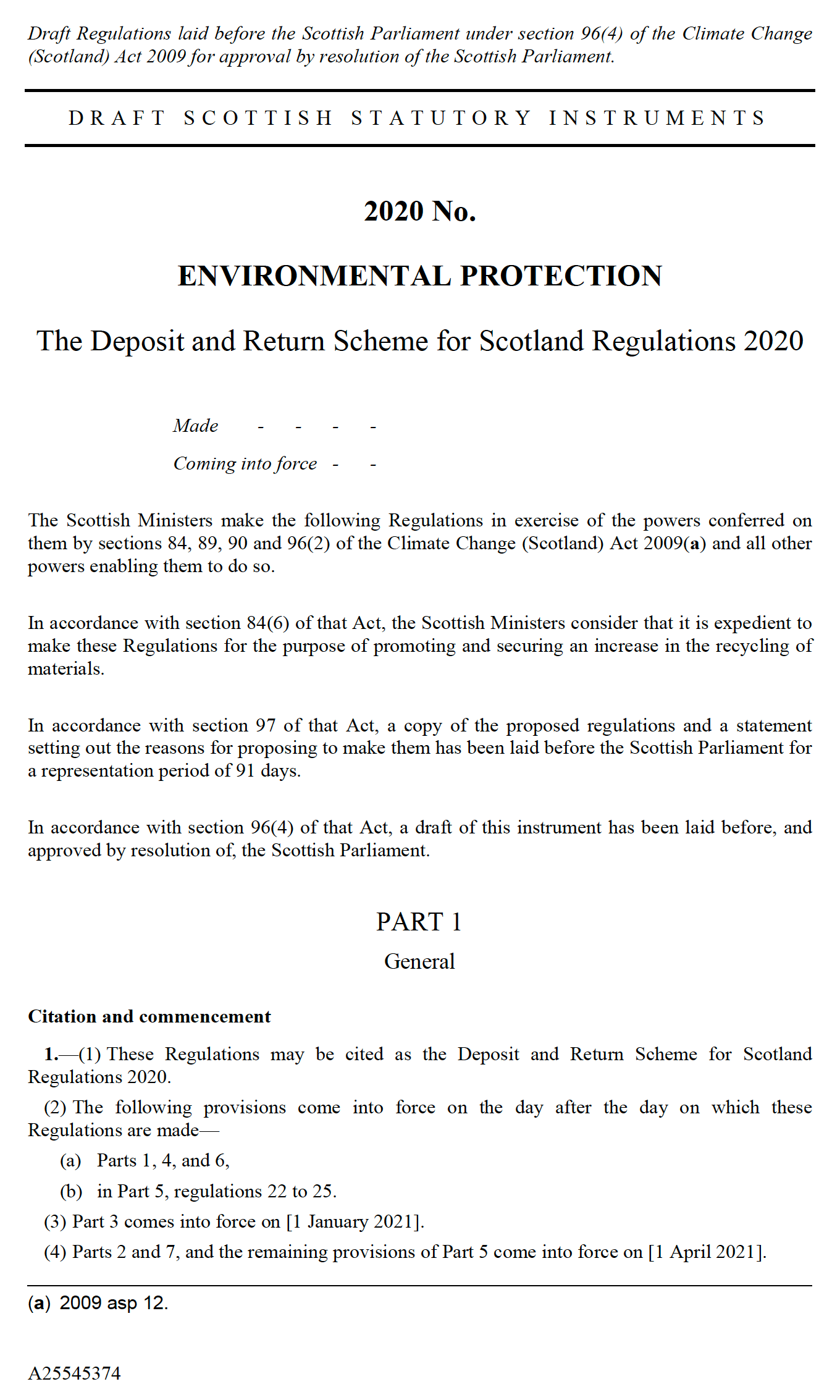
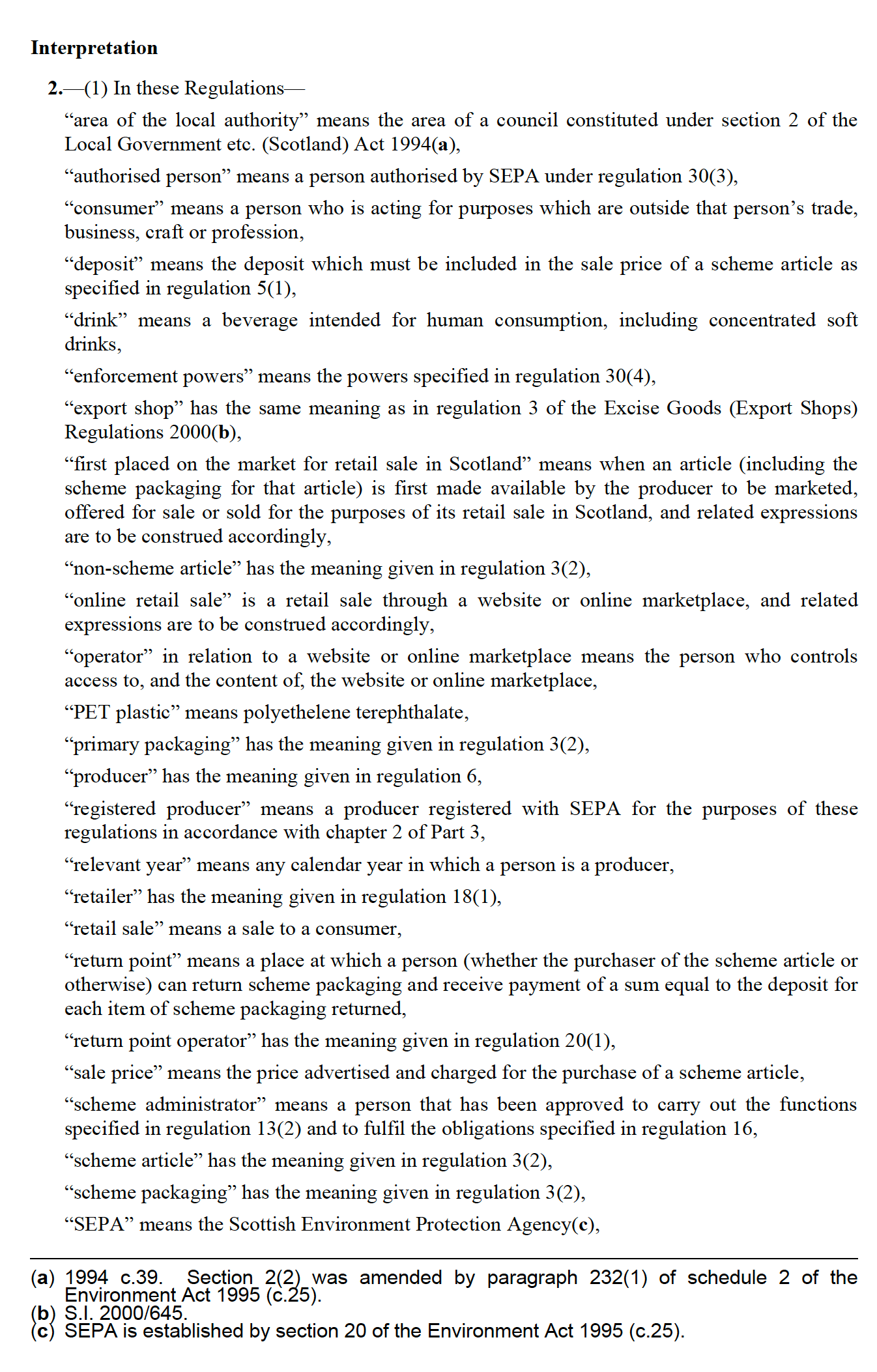
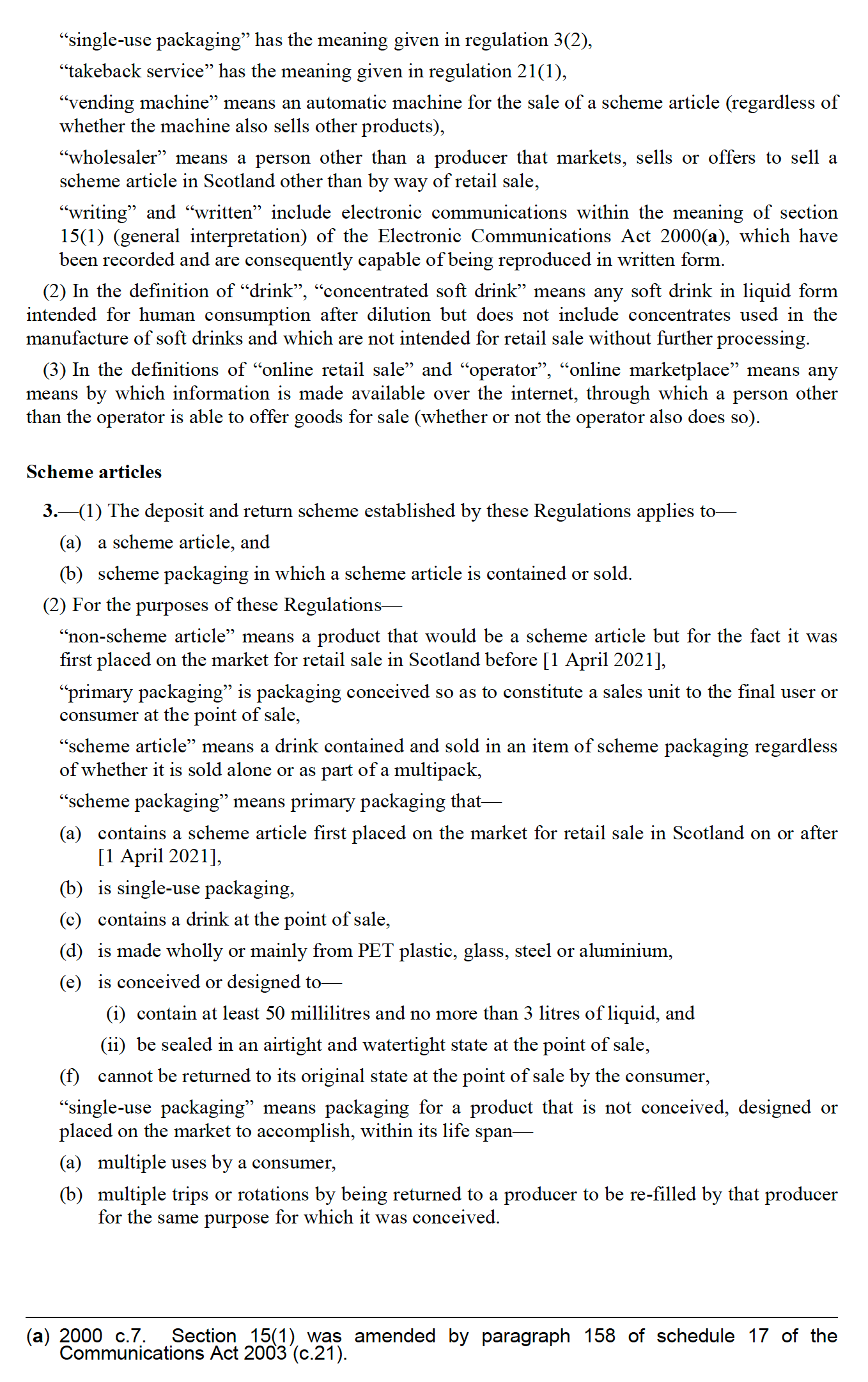
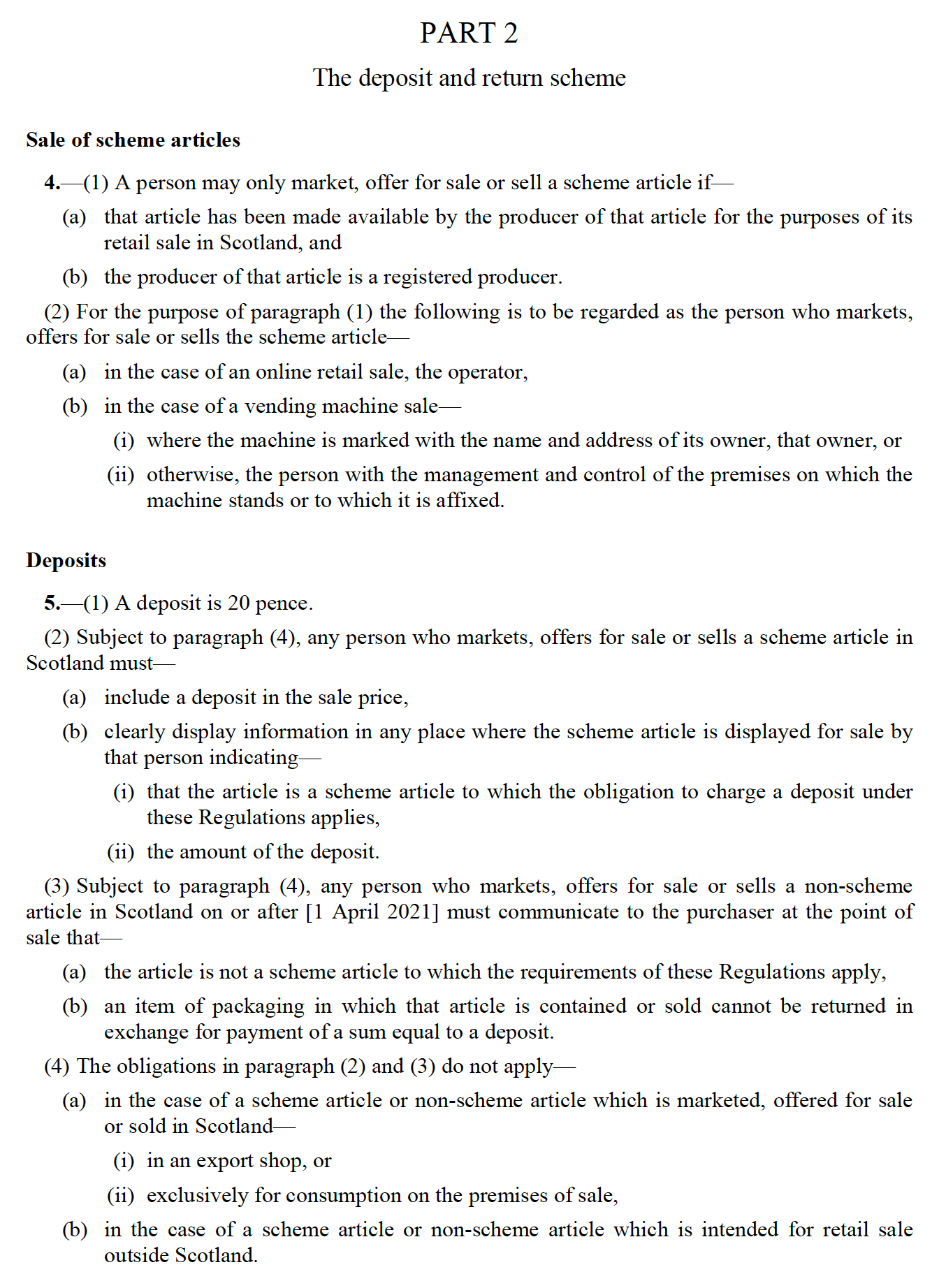
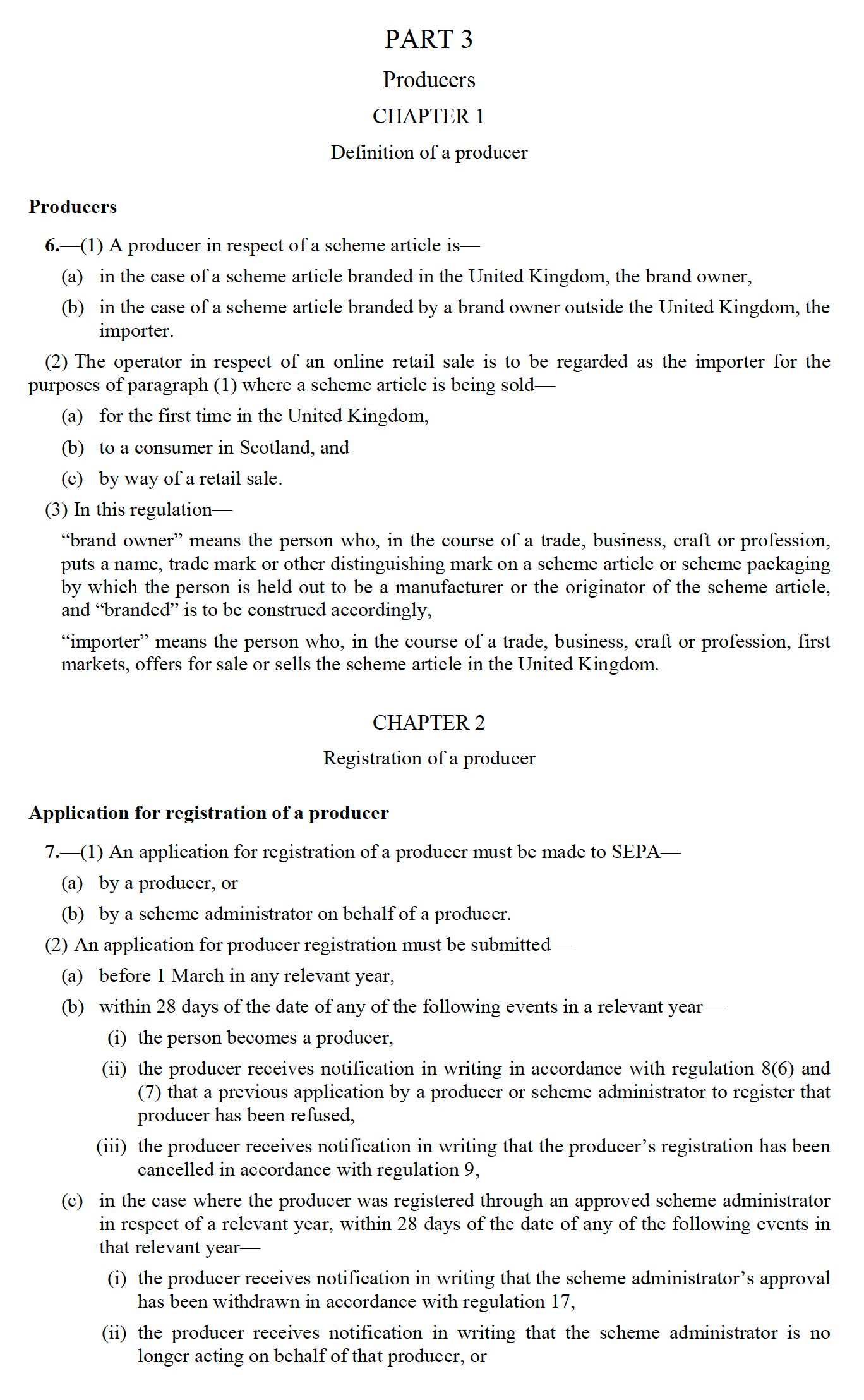
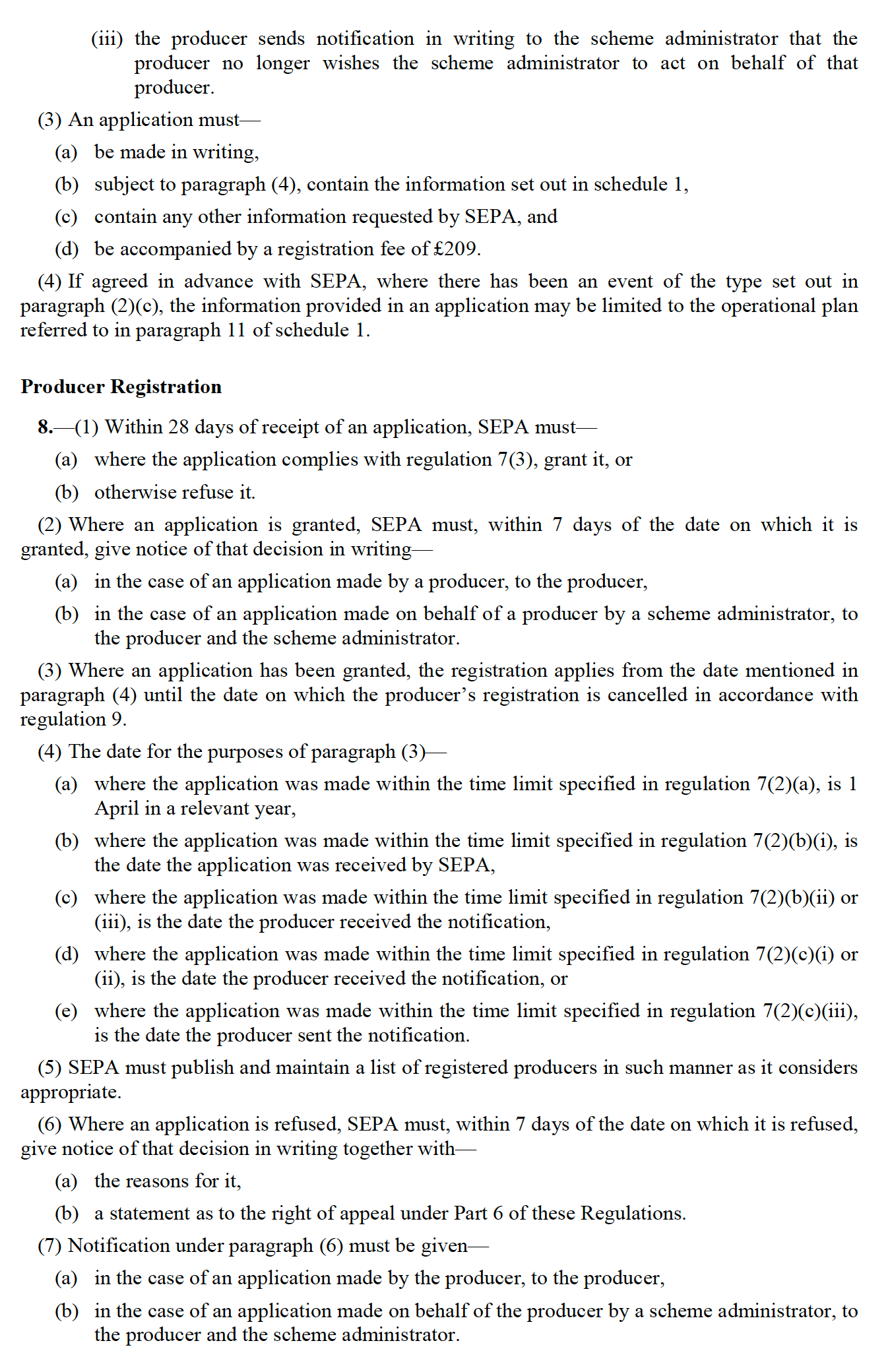
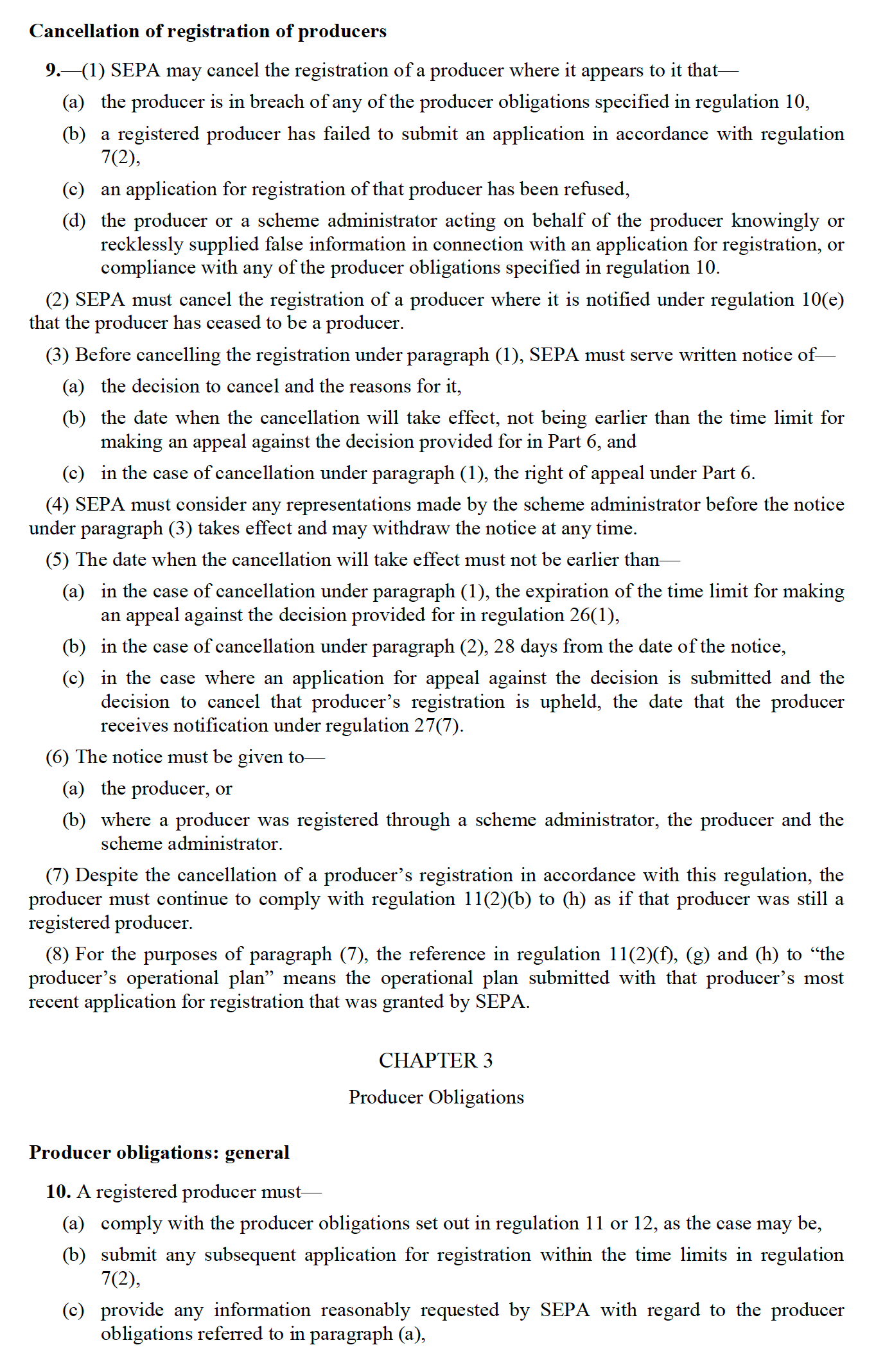
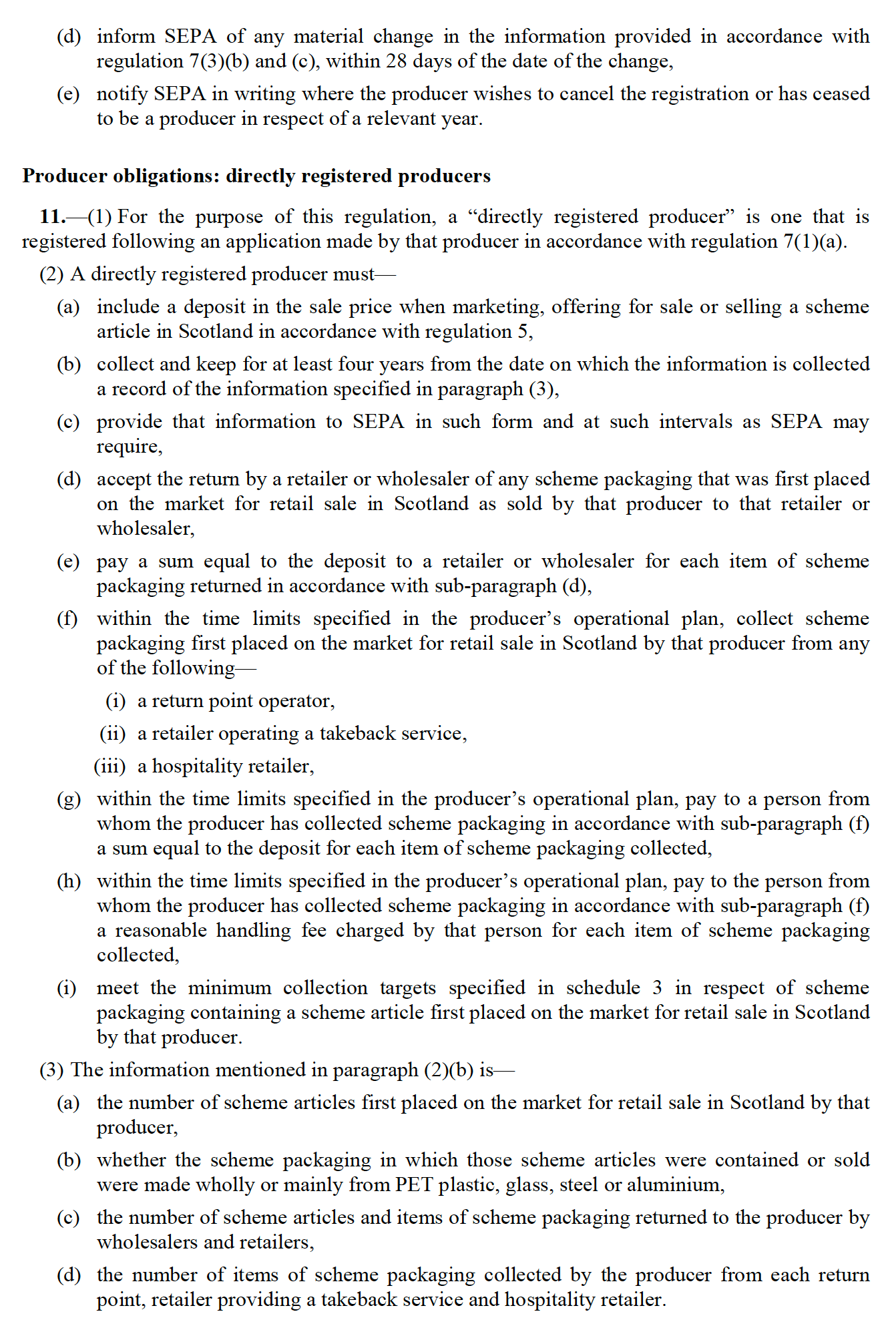
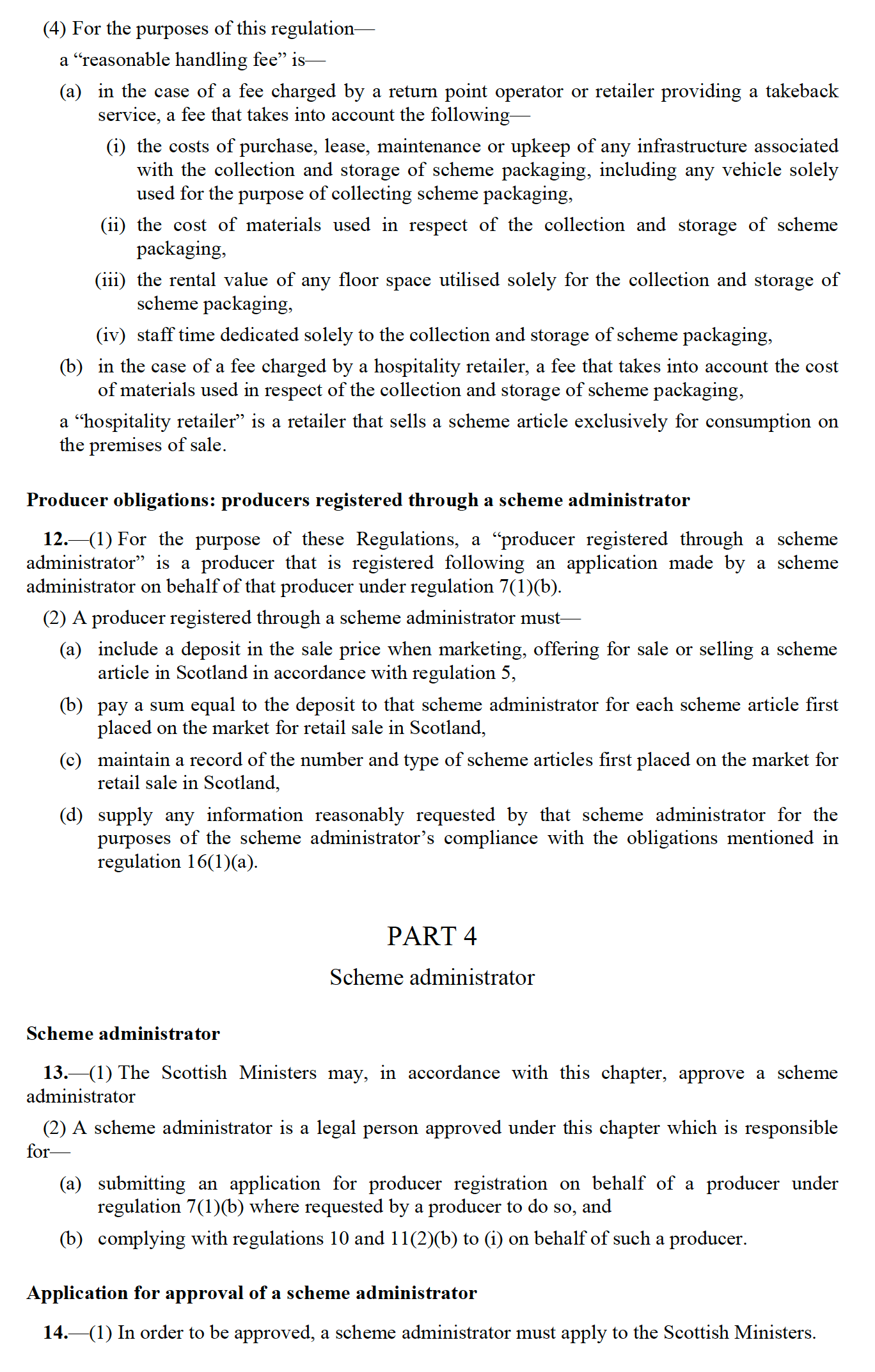
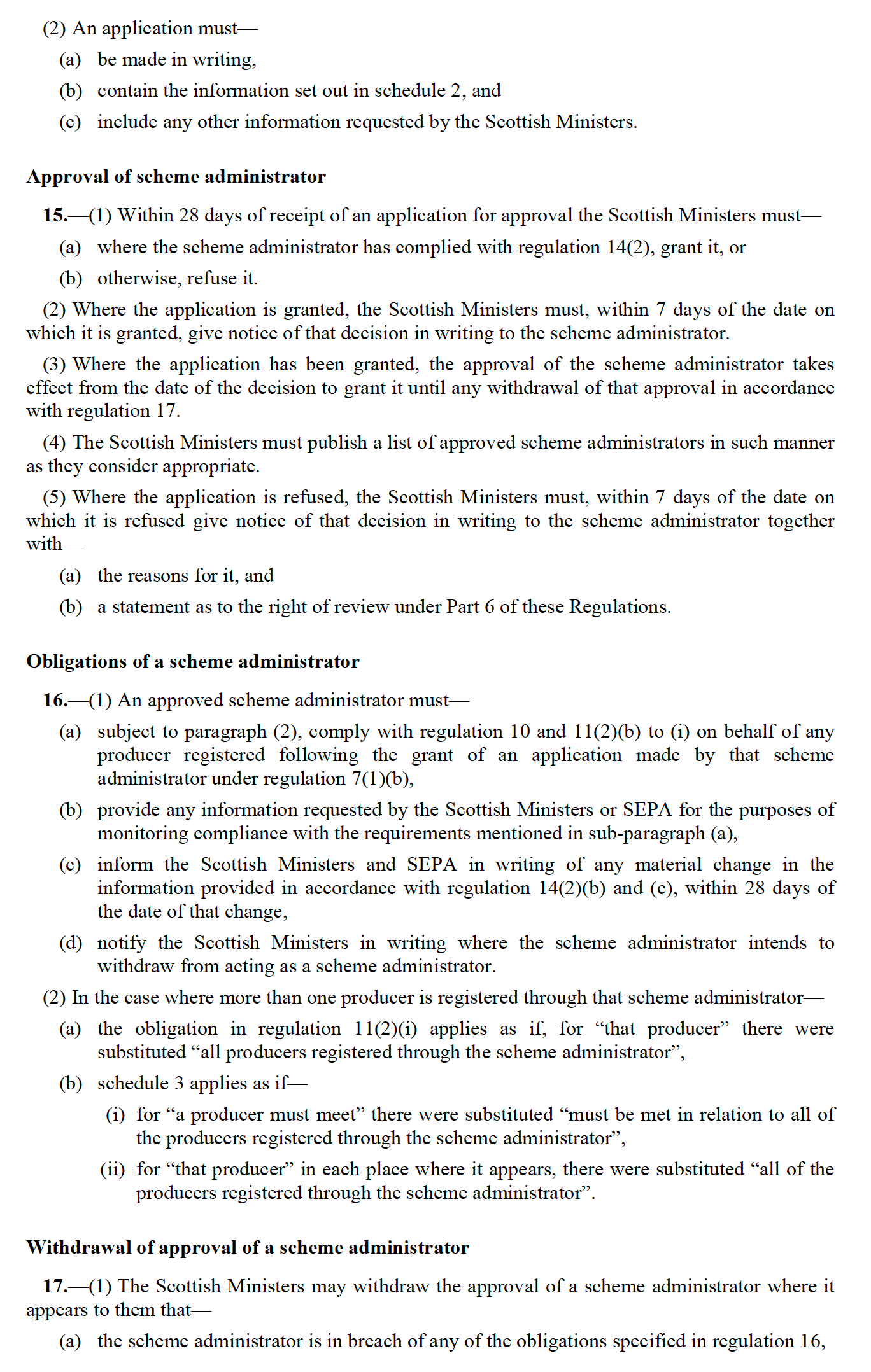
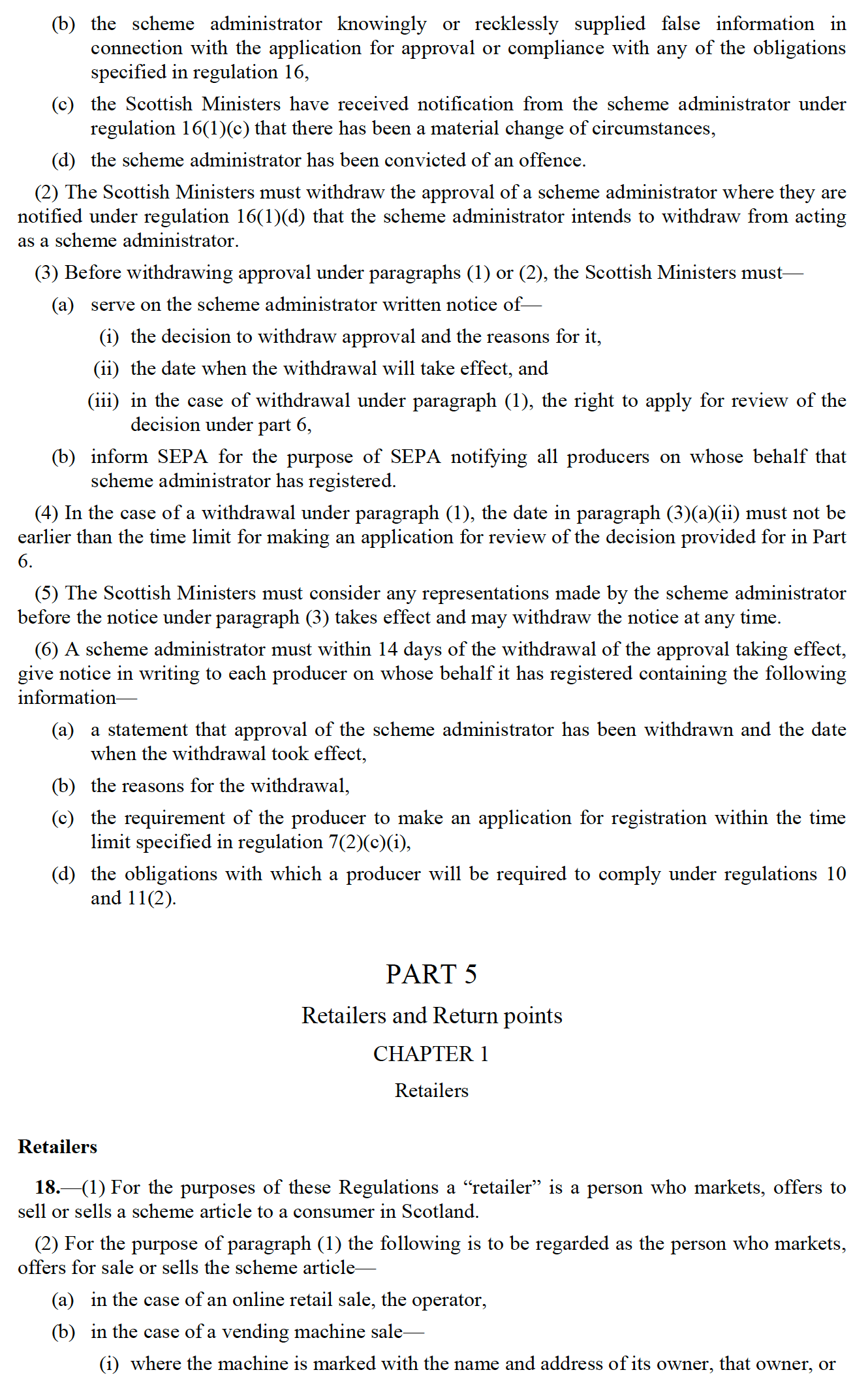
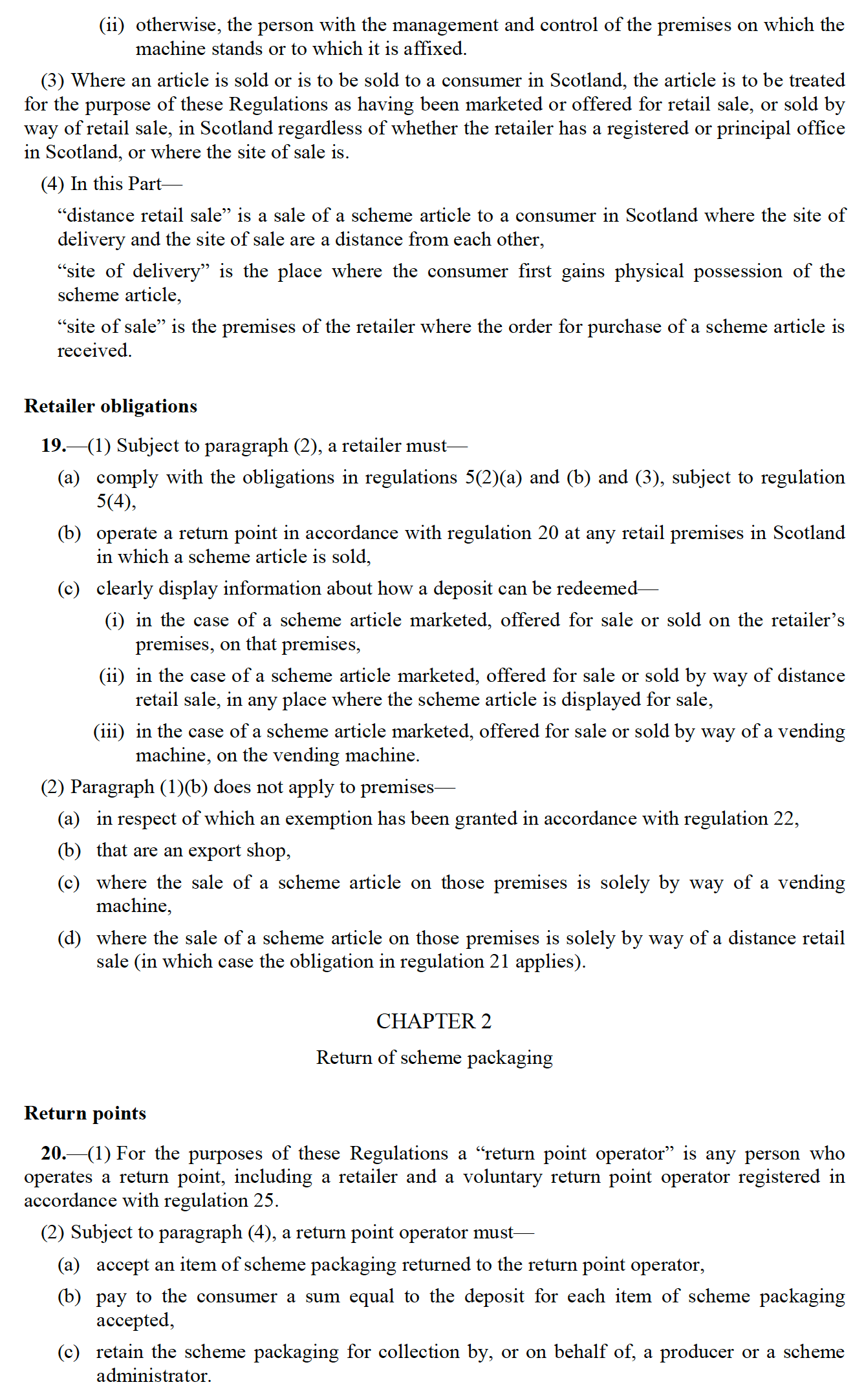
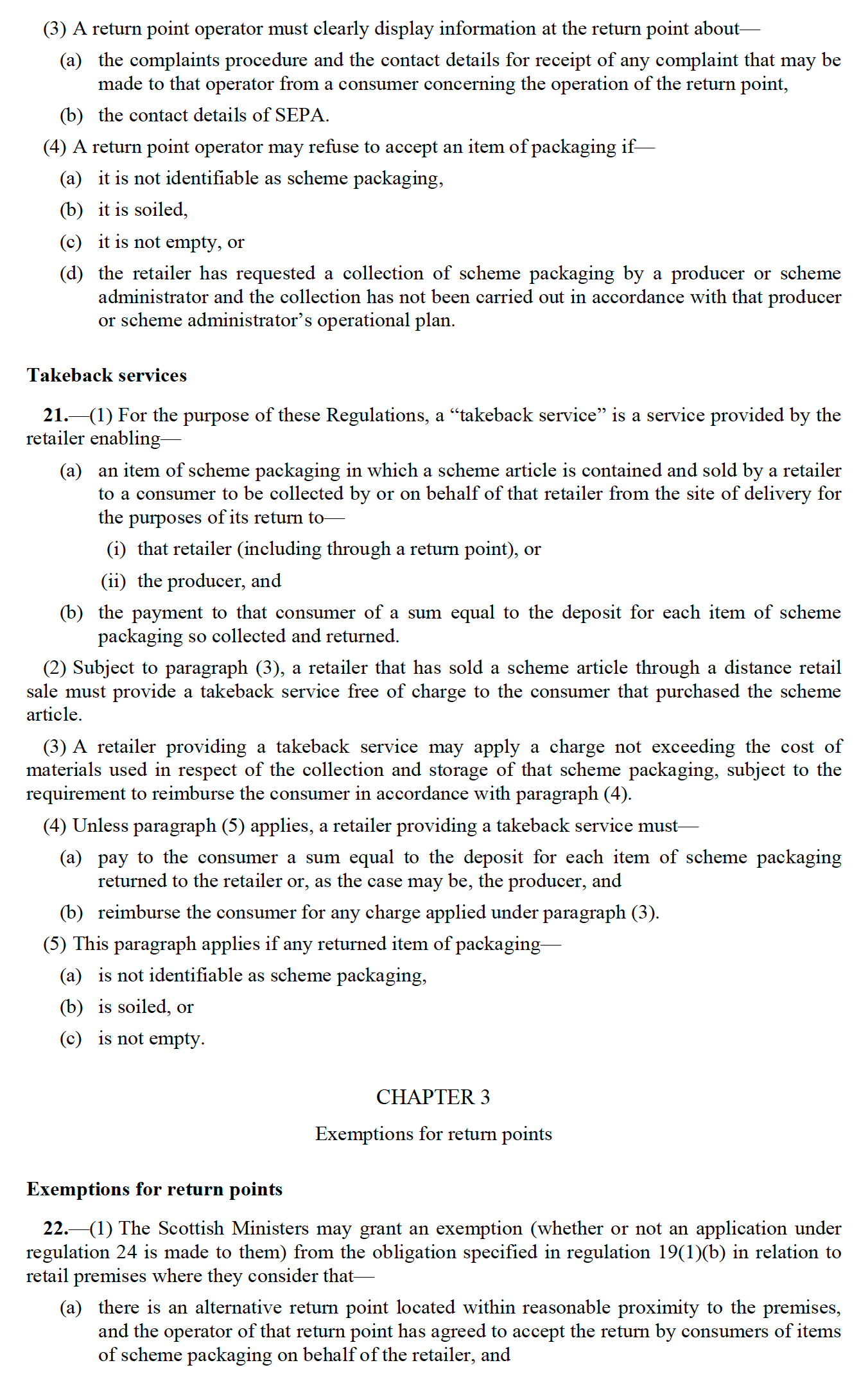
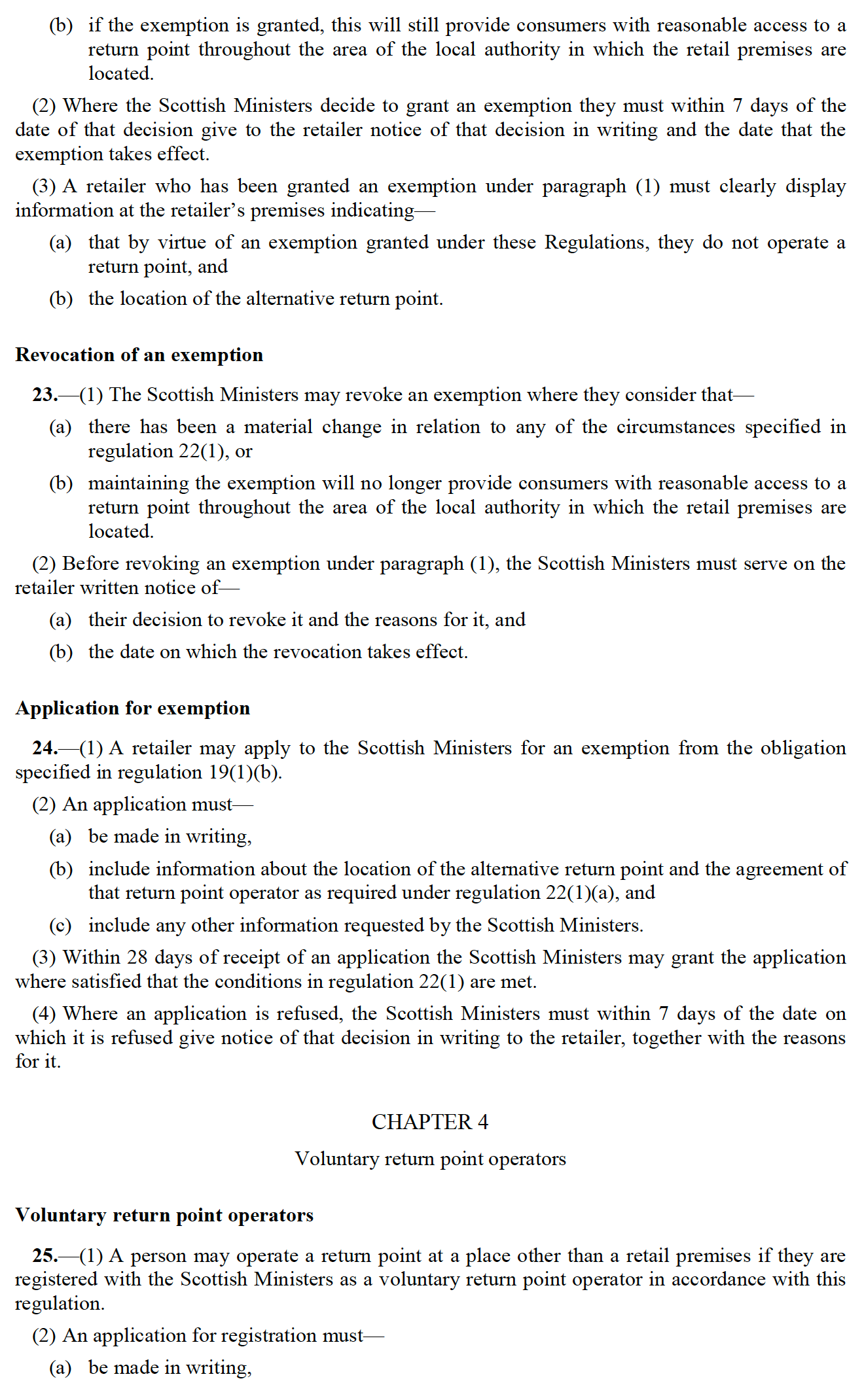
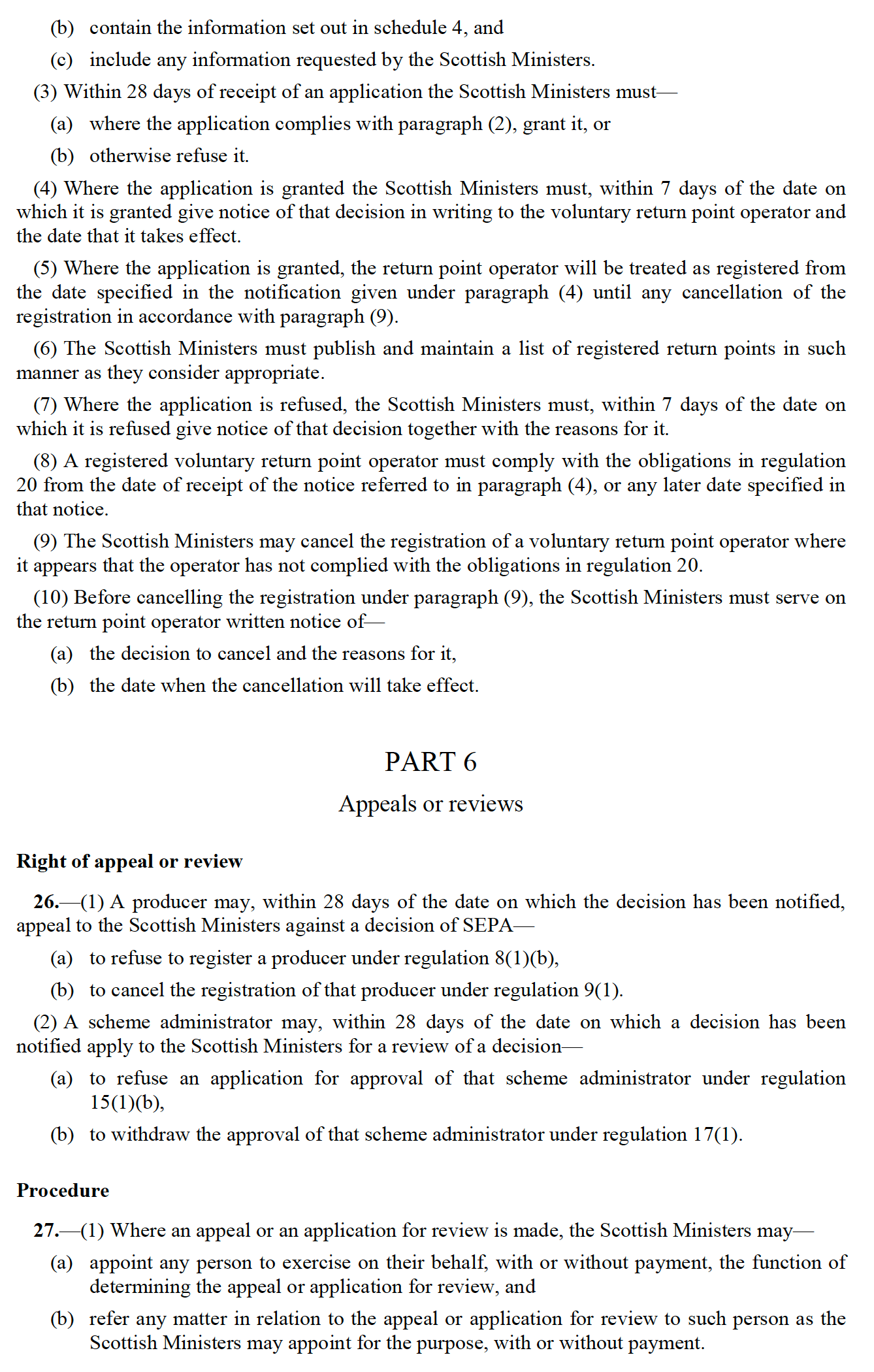
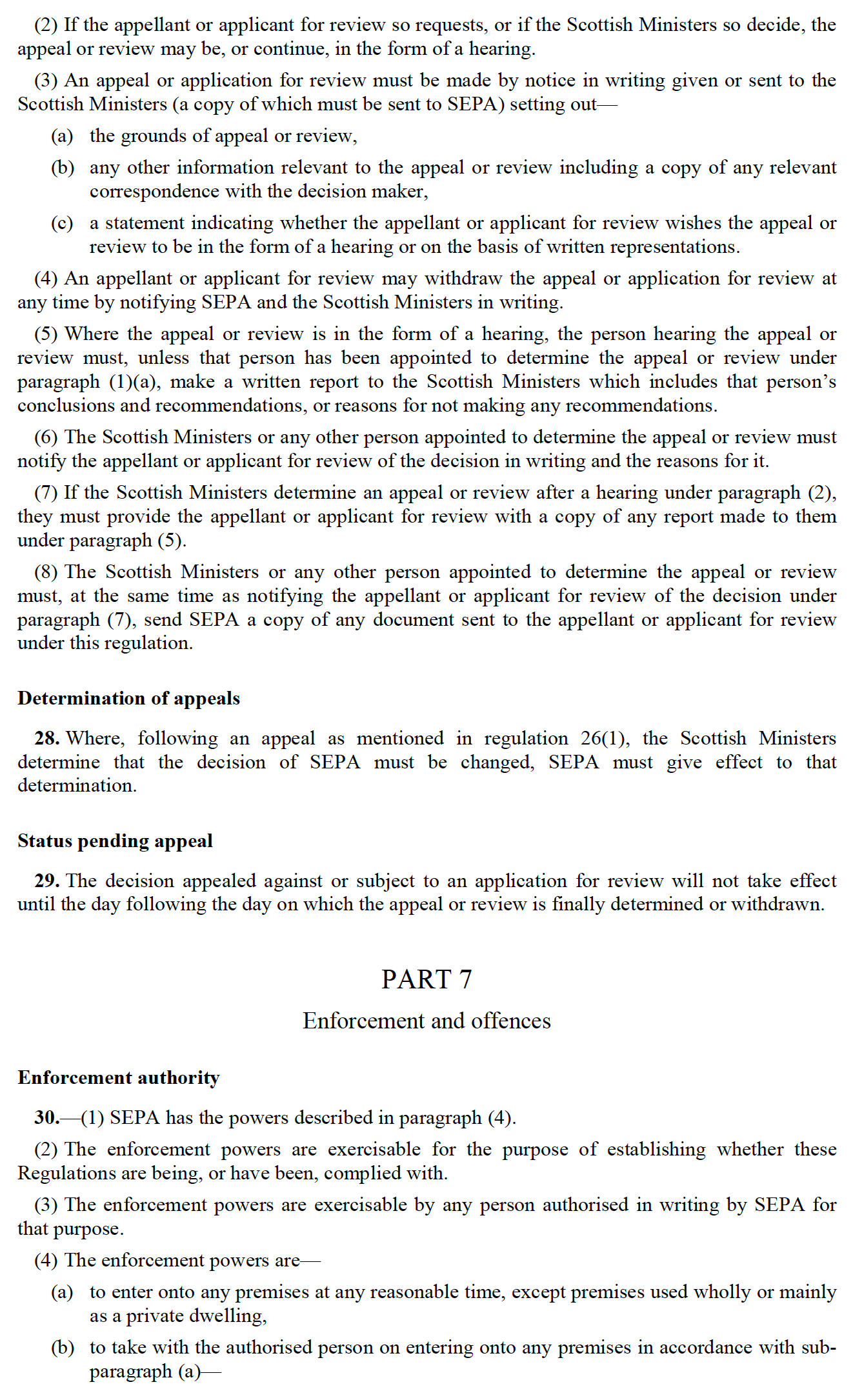
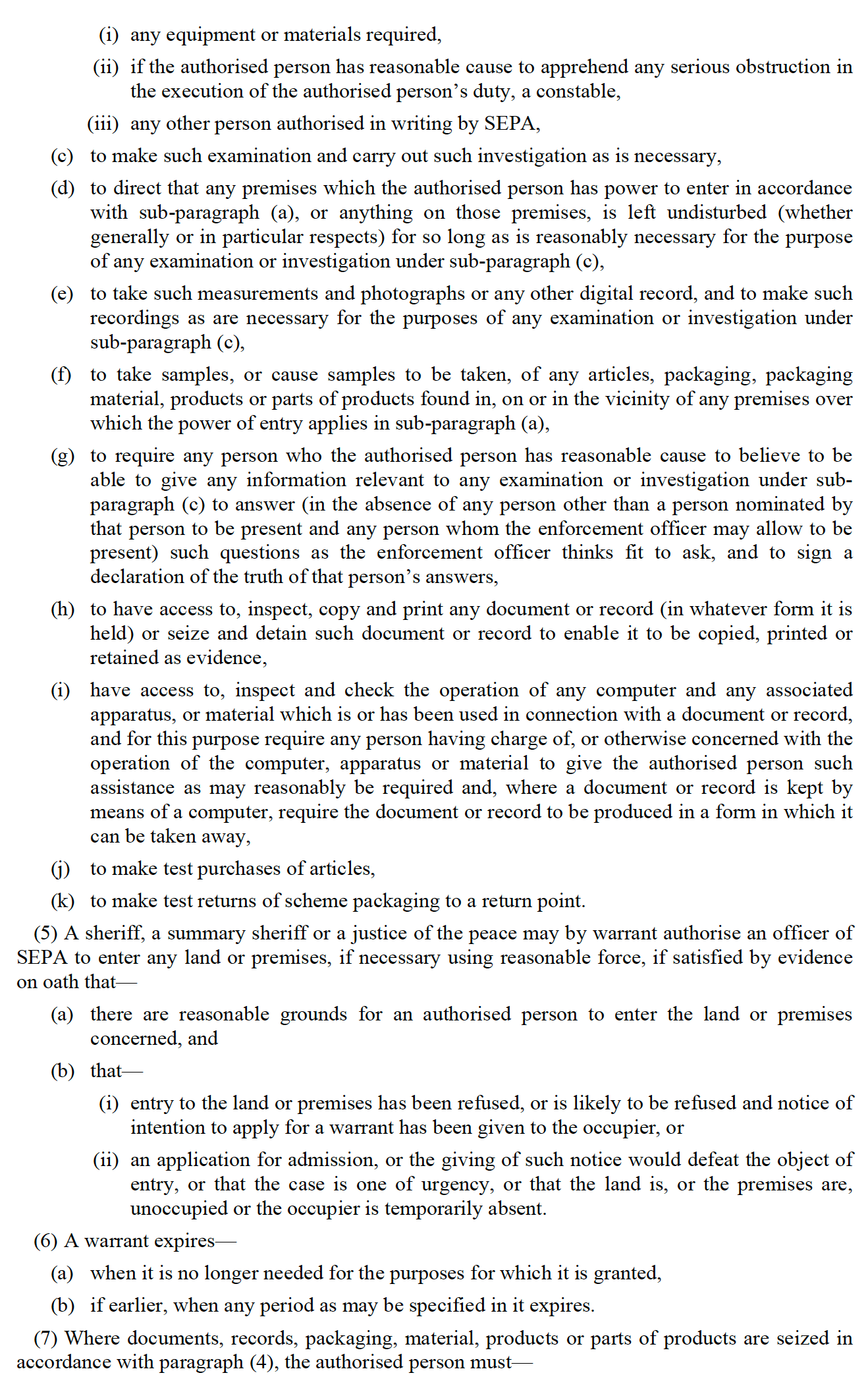
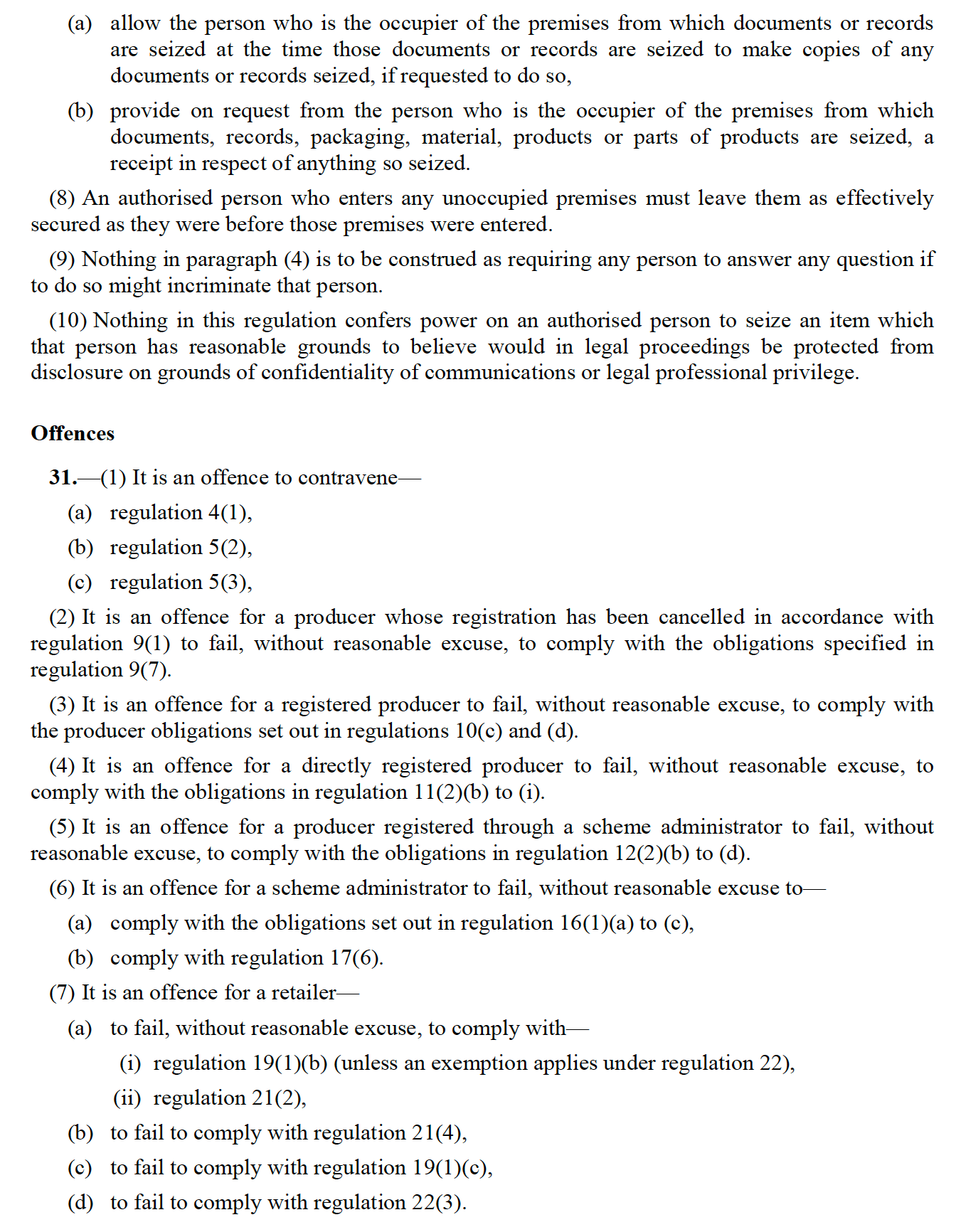
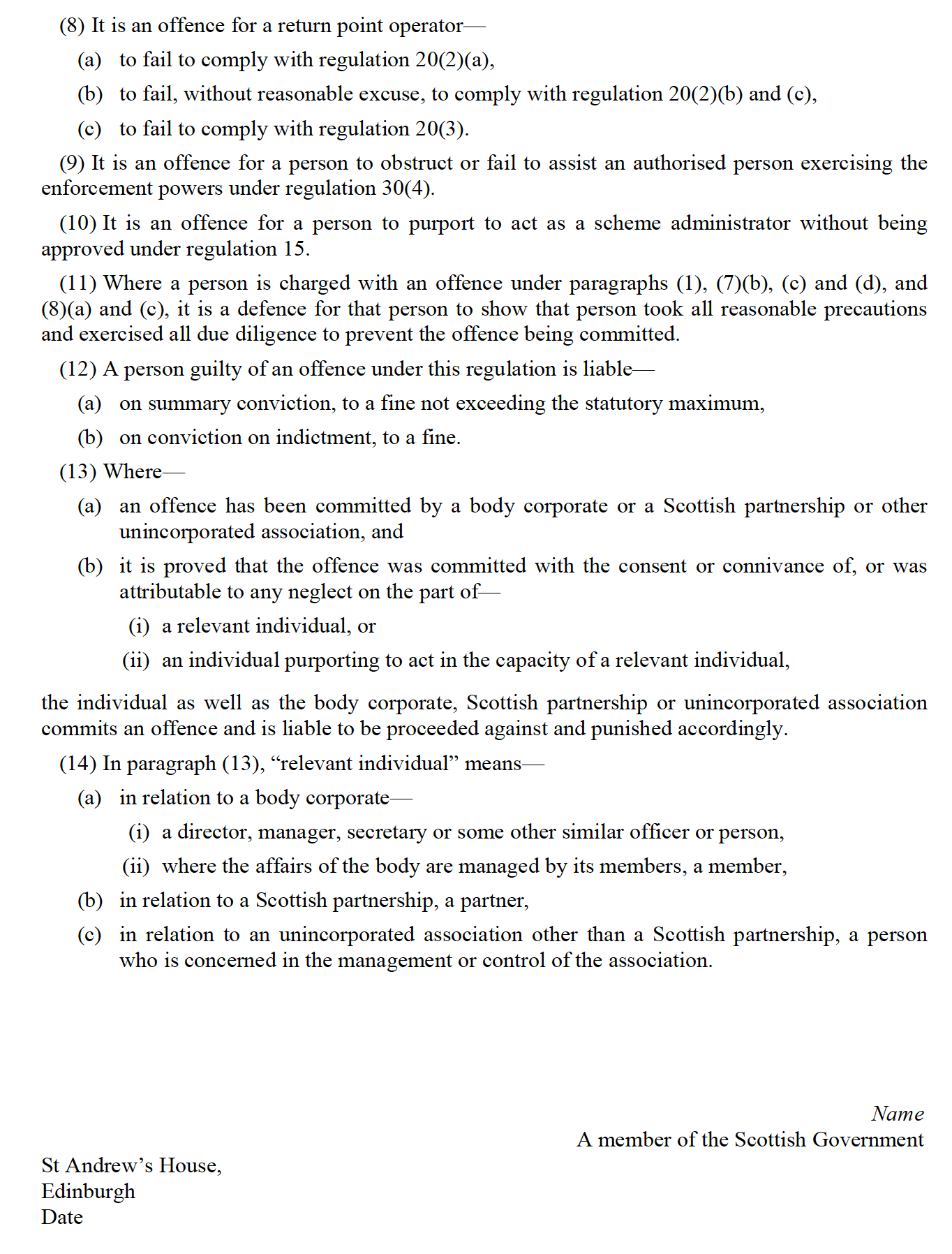
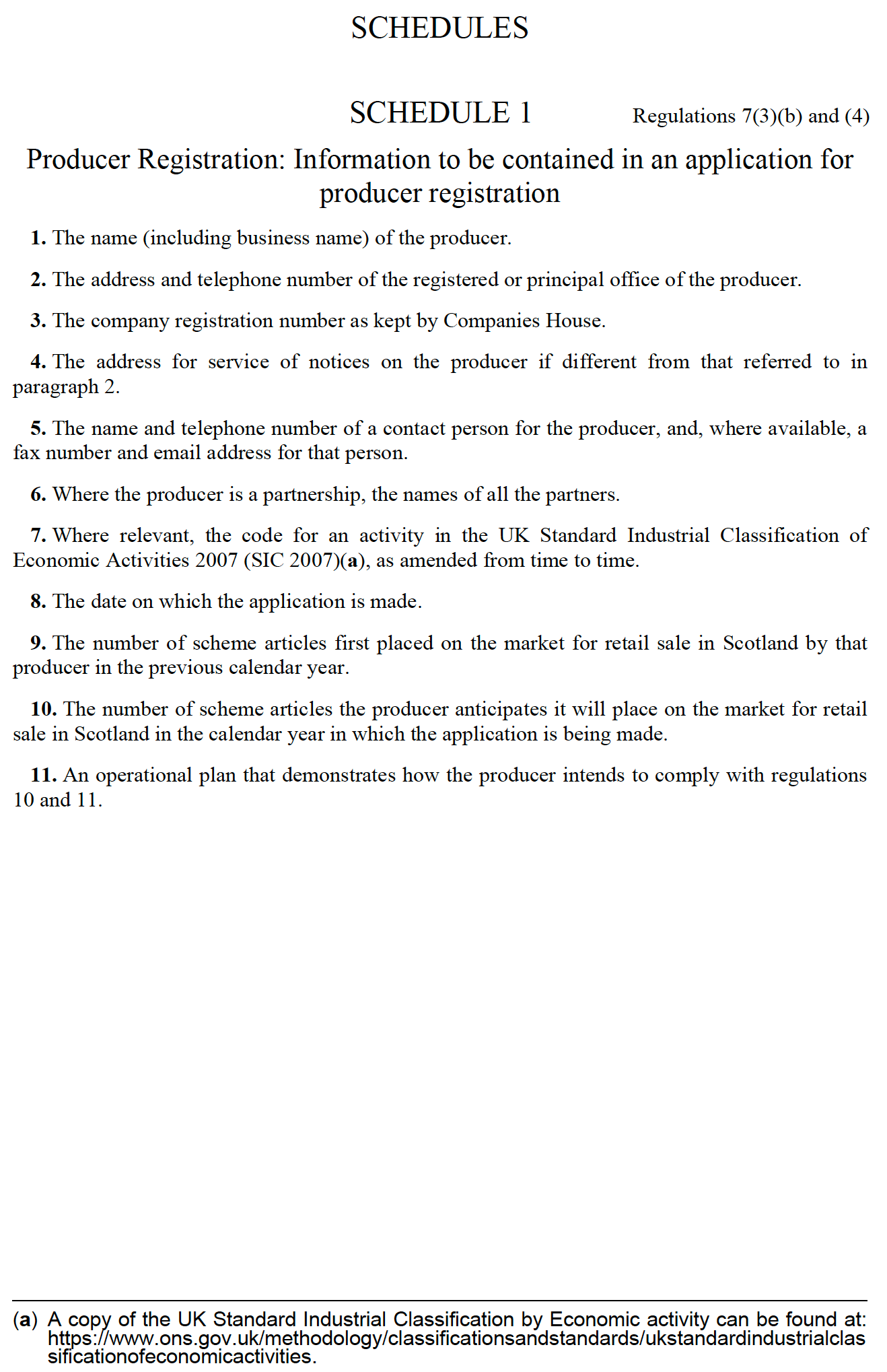
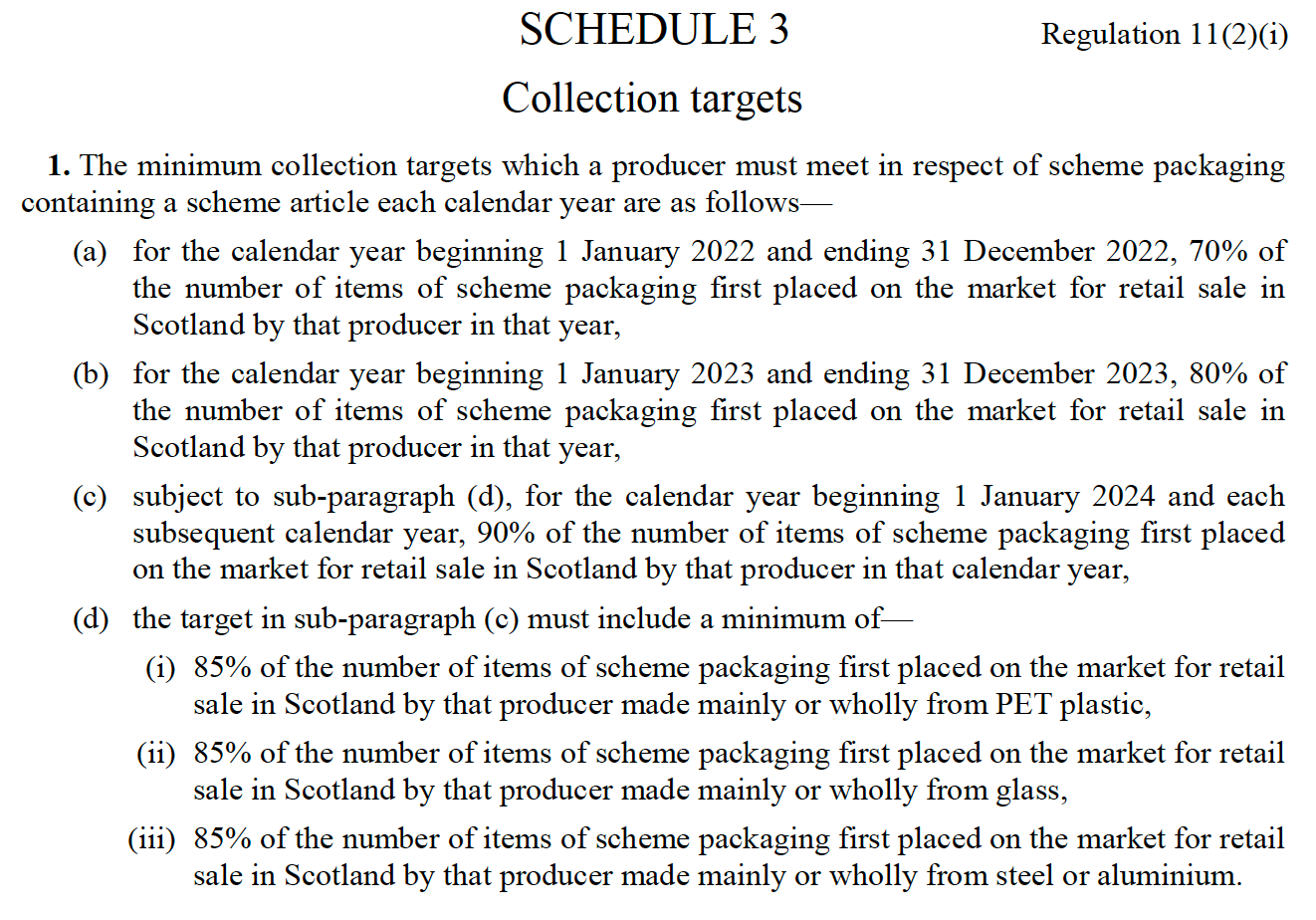
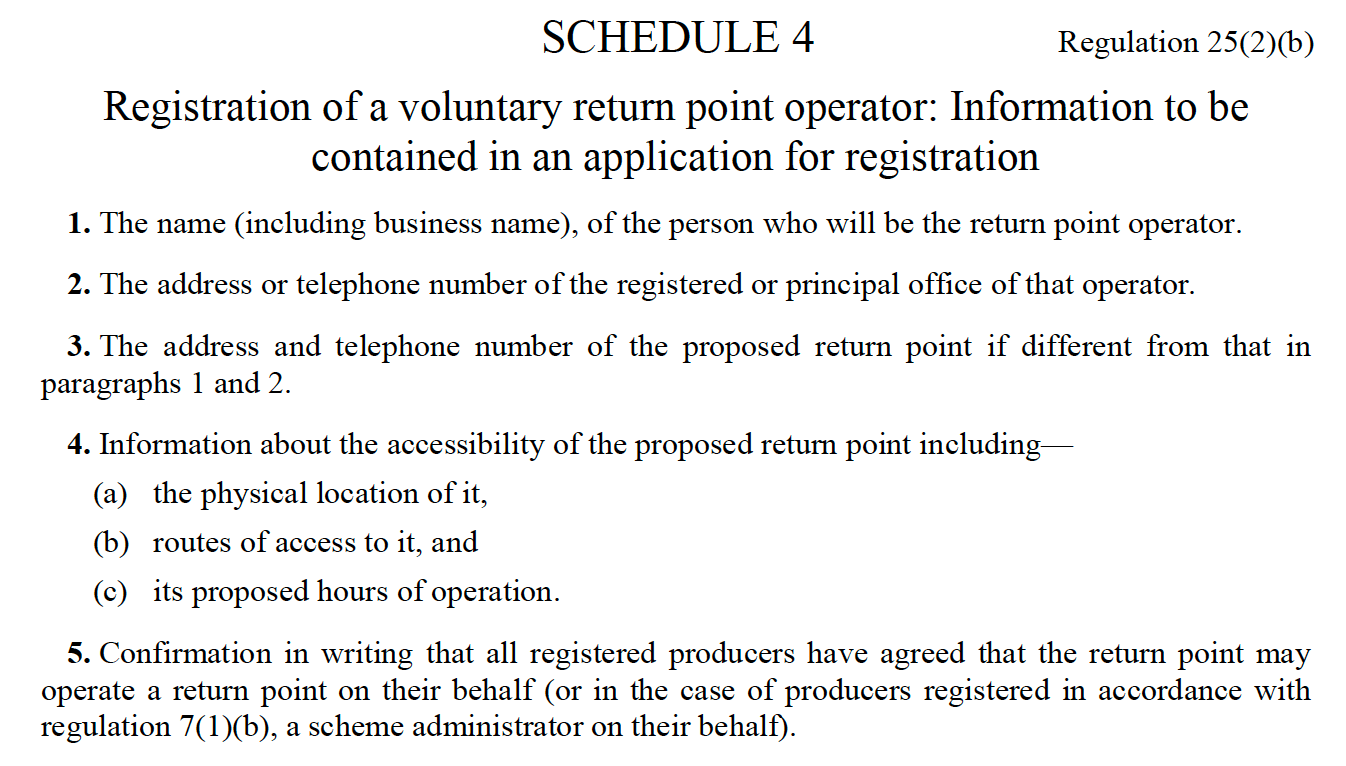
Contact
Email: DRSinScotland@gov.scot
There is a problem
Thanks for your feedback